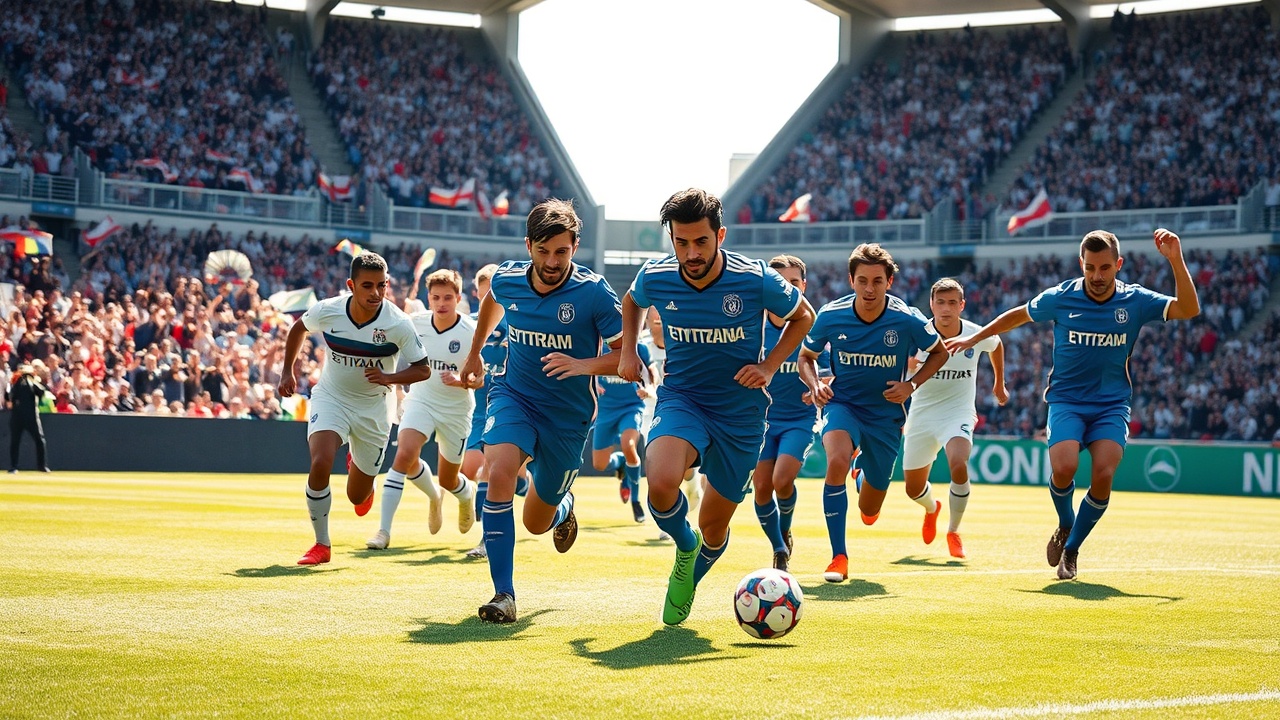Gattuso Takes Charge of the Azzurri
As Gennaro Gattuso takes the helm as Italy’s head coach, the Azzurri’s initial performances under his leadership raise questions about their traditional defensive prowess. In their first match on Friday, Italy recorded an overwhelming 5-0 victory against Estonia, demonstrating an impressive attacking display with an expected goals (xG) figure of 4.74 and a staggering 40 shots on target. This tally might very well be a record for the national team, given historical statistics.
Defensive Struggles Against Israel
However, just a few days later, Italy faced a dramatic test against Israel. Despite being up 4-2 late in the match, they miraculously conceded two late goals in the final minutes, only to secure a wild 5-4 victory in injury time. Adding to their woes, the team also recorded two own goals, marking a historic first in World Cup qualifying where they allowed four goals during a single match.
“We are a bunch of crazies; we concede absurd goals!”
Gattuso remarked, visibly frustrated after the match. In both games, while Italy showcased attacking creativity and determination, they also exposed glaring weaknesses in their defensive organization, a stark departure from the historical strength that has defined Italian football since the 1950s, with legends like Chiellini and Bonucci serving as pillars of defensive excellence in recent tournaments.
Critical Defensive Lapses
The match against Israel revealed critical defensive lapses. Gianluigi Donnarumma nearly conceded an own goal early on but was saved by a VAR decision after an unseen foul. Later, a miscalculation by Manuel Locatelli resulted in a self-inflicted goal, and an open-header scored by Israel’s Dor Peretz illustrated Italy’s inability to maintain defensive discipline. This was compounded by a chaotic finish to the match where Italy, leading comfortably, allowed Israel to equalize in a manner reminiscent of past national disappointments.
“We must remain focused until the game concludes; it isn’t over until the final whistle,”
Gattuso stated, drawing parallels with a narrative that emphasizes the need for concentration.
Gattuso’s Tactical Approach
Despite these struggles, Gattuso’s bold tactical approach emphasizes ambition and dynamic play. By fielding two strikers, Moise Kean and Mateo Retegui, closely positioned, Italy’s forwards received the ball more frequently, and wingers were encouraged to exploit one-on-one scenarios. Unlike the cautious strategies employed by recent managers, Gattuso’s methods aim to invigorate the Azzurri’s attacking instincts.
Yet, these aggressive tactics come with the risk of compromising defensive stability—a vital tenet of Italian football history. The two previous coaches, Roberto Mancini and Luciano Spalletti, were more conservative, focusing on tactical discipline. Now, Gattuso, previously known for his gritty playing style, seeks to infuse a blue-collar mentality into the squad, with less emphasis on intricate tactics but a focus on direct action and effort.
Looking Ahead
Gattuso’s coaching career has had its ups and downs, with several firings after short stints, but he arrives at the national team with a fervent desire to succeed. This enthusiasm, combined with his relative low employment cost compared to his predecessors, has earned him the opportunity. As Italy navigates this transitional phase, there is a sense that the team is not yet in sync, but with time, they might find a balance between the attacking flair Gattuso encourages and the defensive discipline that has historically been the hallmark of Italian football. The initial signs show promise, and if they can rectify their defensive frailties, the Azzurri may just continue to excite fans while forging a new identity under Gattuso’s charge.




